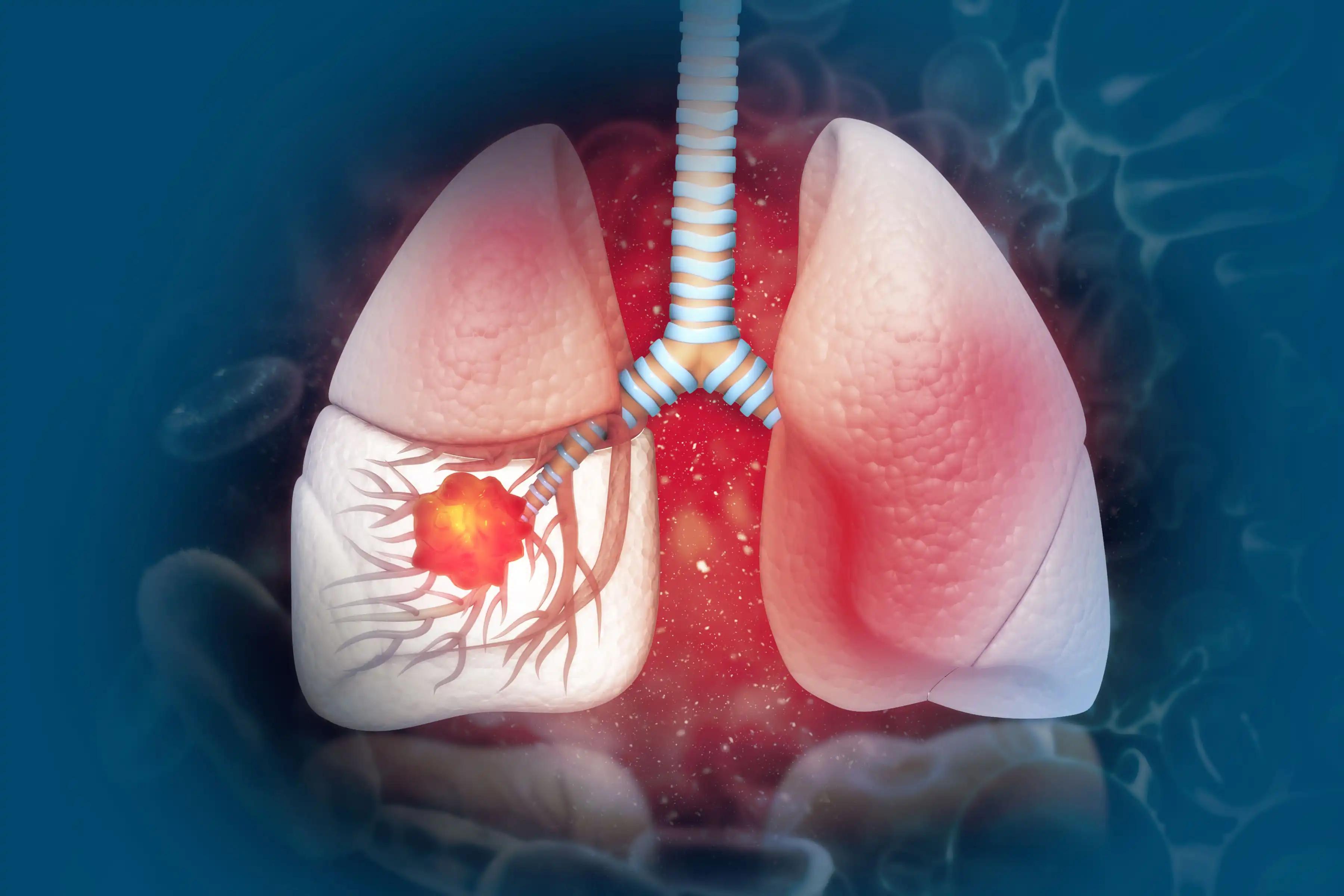KEY TAKEAWAYS
- The START-NEW-ERA phase II trial evaluated the effectiveness and safety of SAbR as a treatment option for LA-NSCLC pts who were unsuitable for ChT-RT.
- The study suggested that exclusive SAbR can provide effective local control and promising survival outcomes with minimal toxicity for LA-NSCLC pts who cannot undergo concurrent chemo-radiotherapy.
In an initial analysis of a phase II trial involving only one treatment arm, the study focused on evaluating the local control (LC) and safety of stereotactic ablative radiotherapy (SAbR) for patients (pts) with locally advanced non-small cell lung cancer (LA-NSCLC) who were not suitable candidates for concurrent chemo-radiotherapy (ChT-RT). Researchers presented the clinical results of LA-NSCLC patients who underwent exclusive SAbR.
Between December 31, 2015, and June 30, 2022, 71 LA-NSCLC pts were enrolled in the trial. Among them, 40 pts (56%) received neoadjuvant ChT followed by SAbR, while 31 pts (44%) received exclusive SAbR. The treatment encompassed the primary tumor (T) and any regionally positive lymph nodes (N). The primary endpoints of the study were LC and safety.
The median age of the pts was 80 years, with an age range of 45 to 88. Among the pts, 20 (64%) had performance status (PS) scores of 0-1, and 11 (36%) had PS scores of 2. Histologically, 71% had adenocarcinoma (ADC), and 29% had squamous cell carcinoma (SCC). Notably, 87% of the pts had tumors located in the ultra-central region. The median prescribed radiation dose was 45 Gy for the primary tumor (T) and 40 Gy for lymph nodes (N), both delivered in five daily fractions.
Following a median follow-up period of 27 months (ranging from 6 to 92 months), 9 patients (29%) experienced local recurrence (LR) at a median time of 13 months (ranging from 7 to 34 months). The median LR-free survival (FS) was not reached, and the 1-year, 2-year, and 4-year LR-FS rates were 81%, 66%, and 66%, respectively. At the last follow-up, 23 patients (74%) were still alive, and the median overall survival (OS) was not reached. The 1-year, 2-year, and 4-year OS rates were 97%, 74%, and 70%, respectively. Eight pts (26%) developed distant progression (dP), with a median dP-FS not reached. The 1-year, 2-year, and 4-year dP-FS rates were 82%, 72%, and 66%, respectively.
The study reported that LA-NSCLC pts who underwent exclusive SAbR treatment achieved favorable local control and promising overall survival outcomes while maintaining excellent treatment adherence and experiencing no severe (≥G3) toxicity. These preliminary prospective clinical results suggest that this approach should be considered for patients not candidates for chemotherapy, potentially offering a significant curative benefit rather than just palliation.
Clinical Trial: https://classic.clinicaltrials.gov/ct2/show/NCT05291780
Arcidiacono, F., Casale, M., Maranzano, E., Italiani, M., Fabiani, S., Zannori, C., Enrico, B., Guida, A., Trippa, F., Anselmo, P. 128P – Stereotactic ablative radiotherapy in locally-advanced non-small cell lung cancer patients: Little palliation or big cure? Sub-analysis of START-NEW-ERA phase II trial. Journal of Thoracic Oncology (2023) 18 (4S): S106-S115.



